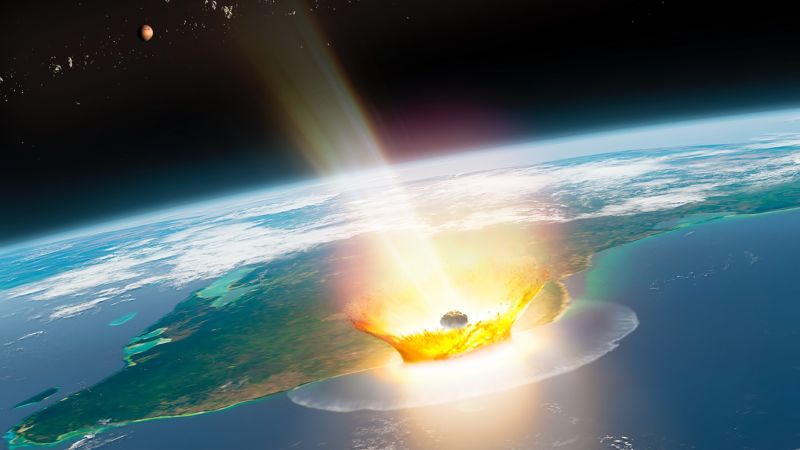Time: 2024-08-17

Scientists have uncovered new evidence regarding the Chicxulub impactor , the asteroid responsible for wiping out the dinosaurs 66 million years ago . This apocalyptic object has been a subject of intense debate , with questions surrounding its nature lingering for years . However , recent findings have shed light on the origins of this asteroid , revealing intriguing details about its composition and impact on Earth.
The team led by Mario Fischer - Gdde from the University of Cologne has conducted a study using ruthenium isotopes to investigate the geological remnants of the Chicxulub impact . Ruthenium , a rare element abundant in asteroids but scarce in Earth 's crust , served as a key indicator of past impacts by space rocks . The results of the study showed a uniform signature across the global layer of debris left by the impact , matching the characteristics of carbonaceous asteroids found beyond the orbit of Jupiter.
The collision of the Chicxulub impactor with what is now the Yucatn Peninsula in Mexico led to a significant turning point in the history of life on Earth . The cataclysmic event resulted in the extinction of 75 % of animal species , marking the end of the age of dinosaurs . Despite the asteroid itself being virtually non - existent today , researchers have managed to piece together its chemical identity , revealing that it was a rare clay - rich mudball containing materials dating back to the early solar system.
The study published in Science provides insights into the dynamic nature of our Solar System , emphasizing the importance of understanding ancient space rocks like the Chicxulub impactor . The asteroid , estimated to be between 6 and 9 miles in diameter , unleashed massive devastation upon impact , creating a cloud of dust that spread worldwide . This event led to a significant drop in temperatures and widespread extinction , highlighting the profound impact of asteroid collisions on Earth 's history.
Through the analysis of ruthenium isotopes from 66 million - year - old rocks in Denmark , Italy , and Spain , researchers identified the Chicxulub impactor as a carbonaceous chondrite . These ancient space rocks , known for containing water , clay , and organic compounds , play a crucial role in shaping our understanding of meteorite impacts . By studying the chemical composition of the asteroid , scientists can gain valuable insights into planetary defense strategies against future asteroid collisions.
The findings of this study underscore the importance of unraveling the mysteries surrounding asteroid impacts and their implications for Earth 's future . With the possibility of another massive impact looming in the distant future , understanding the physical and chemical properties of asteroids like the Chicxulub impactor is essential for devising effective strategies to protect our planet . The research not only enriches our understanding of past events but also paves the way for a more prepared and informed approach to safeguarding Earth from potential cosmic threats.